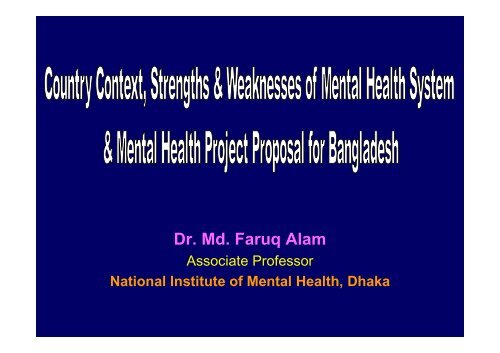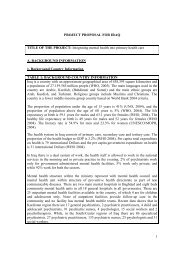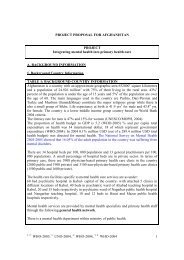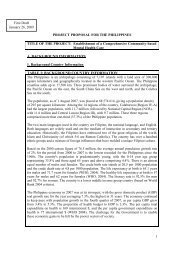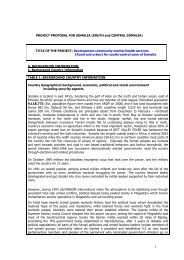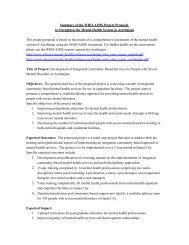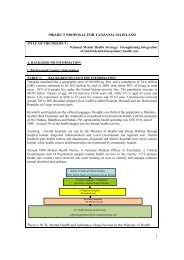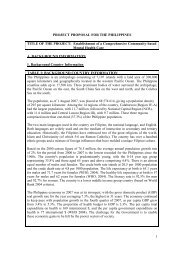Dr. Md. Faruq Alam - Cittadinanza
Dr. Md. Faruq Alam - Cittadinanza
Dr. Md. Faruq Alam - Cittadinanza
Create successful ePaper yourself
Turn your PDF publications into a flip-book with our unique Google optimized e-Paper software.
<strong>Dr</strong>. <strong>Md</strong>. <strong>Faruq</strong> <strong>Alam</strong><br />
Associate Professor<br />
National Institute of Mental Health, Dhaka
National Institute of Mental Health, Dhaka
Area<br />
Country context<br />
- 147570 sq. km.<br />
Population - 141.8 million (Rural 74%)<br />
Life expectancy at birth<br />
- Male : 62 yrs., Female : 63 yrs.<br />
Religious group - Muslims / Hindus / Christians /<br />
Buddhists / Tribal<br />
Economy<br />
- Lower middle income group<br />
Literacy rate - Male : 52.8%, Female : 44.5%<br />
Health budget<br />
- 3.4 % of GDP<br />
Prevalence of mental dis. - 16.05%<br />
Mental health budget<br />
Mental health manpower<br />
Psychiatrist<br />
- 0.44% of health budget<br />
- 0.49 / 100,000 population<br />
- 0.07 / 100,000 population<br />
Source : WHO AIMS, National Mental Health Survey, Bangladesh, 2003-05
Strengths of the mental health system<br />
1 Presence of primary care clinics upto rural<br />
level - Single channel service delivery system<br />
for all types of health services<br />
2 Training of primary care health staffs is<br />
ongoing programme<br />
3 Mental health policy, strategy & action plan<br />
has been developed in 2006
Weaknesses of the mental health system<br />
1 Limited human & financial resources in<br />
mental health<br />
2 Scarcity of outpatient & inpatient facilities<br />
3 Absence of updated mental health legislation
Title of the proposed project<br />
Strengthening mental health care through<br />
primary health care approach
Objectives of the project<br />
1 To enhance the capacity of primary care staffs<br />
in recognizing & primarily treating mental<br />
disorders<br />
2 To develop referral system between primary<br />
care level & mental health outpatient facilities<br />
3 To monitor the changes through a simple<br />
monitoring system
Expected results from the project<br />
1 Training of 425 primary care staffs (50 doctors, 75<br />
nurses & 300 health workers) in four model sub-districts<br />
(at least 5 days of training per year)<br />
2 Establishing a liaison body between primary care staff &<br />
department of mental health to discuss the problem of<br />
integration every two months<br />
3 Monitoring changes in each model primary care clinic<br />
through a simple monitoring system<br />
4 Doubling the training hours for doctors & nurses in<br />
undergraduate training
Model sub-districts for the project<br />
4 Sub-districts around Dhaka city<br />
(population : about 700,000)<br />
Keraniganj<br />
(South)<br />
Sonargaon Dhaka Dhamrai<br />
(East)<br />
(West)<br />
Kaliganj<br />
(North)


